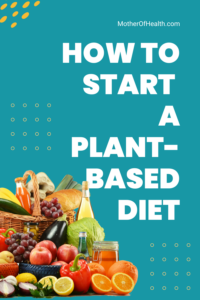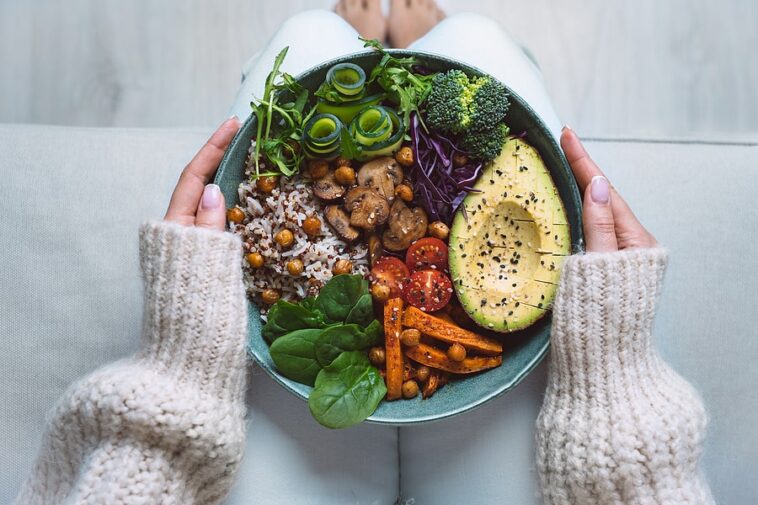If you've ever pondered how to bid adieu to animal products and embrace a healthier lifestyle, you're not alone. The transition to a plant-based diet for beginners can be intimidating but fear not, because we're here to unravel it for you. In this article, we're about to unveil tips that will make your journey to a plant-based lifestyle not just easy, but incredibly exciting. So, if you're eager to discover how to take the first step towards a more wholesome you, let's dive in.
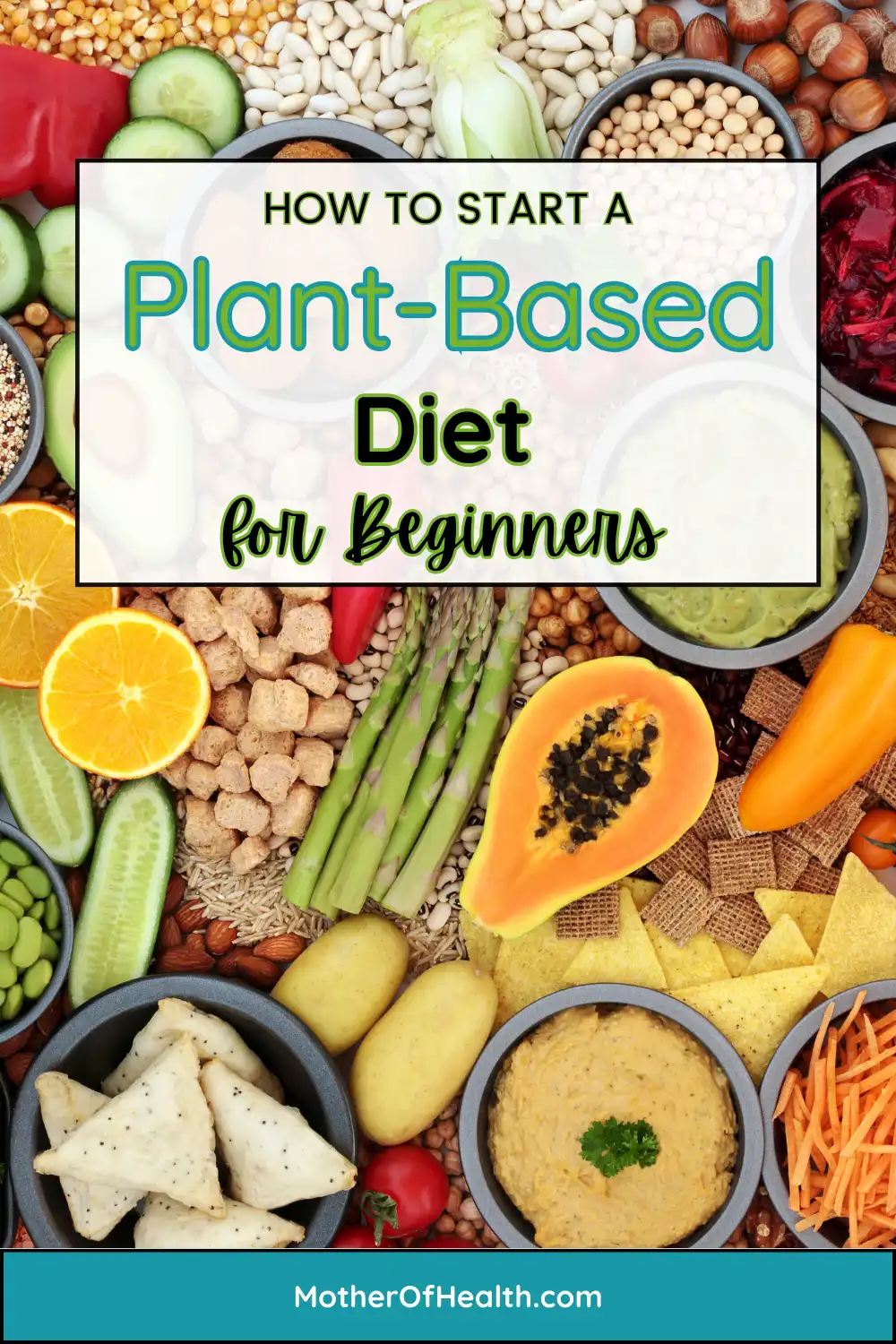
Definition of a Plant-Based Diet
At its simplest, a plant-based diet is a way of eating that centers around foods primarily sourced from plants. This includes an array of colorful vegetables, succulent fruits, hearty grains, and protein-packed legumes.
Some following a plant-based diet may opt to exclude animal products entirely. Others might still include items like honey or occasionally indulge in dairy or eggs. Yet, the core principle remains the same: emphasizing plant-derived foods as the star of the plate.
Understanding the Differences: Vegan, Vegetarian, and Other Plant-Based Diets
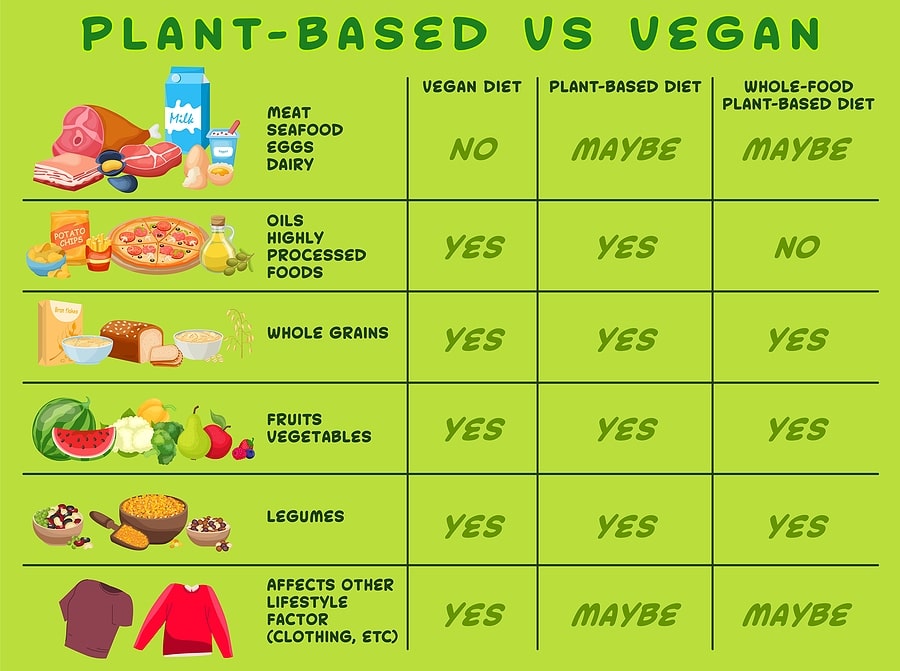
A plant-based vegetarian diet and a vegan diet both center on consuming plant-derived foods, but they differ in their allowances.
Vegan diets adhere to the strictest form, eliminating all animal products, including meat, poultry, fish, seafood, eggs, and dairy. More on Vegan Diet for Beginners here.
A Whole Food Plant-Based Diet emphasizes the consumption of natural, minimally processed plant foods.
In contrast, vegetarians incorporate eggs and dairy into their diets but avoid meat, fish, poultry, and seafood.
There are also variations like the semi-vegetarian diet which includes mostly plants.
The flexitarian diet occasionally includes meat and seafood.
Or the pescatarian diet which focuses on fish, seafood, eggs, and dairy alongside plant-based foods.
Each approach offers unique dietary choices within the broader spectrum of plant-based living.
The Growing Trend of Plant-based Diets
Have you noticed more vegan cheese in markets? Or plant-based dishes on menus? You're not alone.
The plant-based diet wave isn't just passing through. It's growing worldwide.
Why? Mostly health reasons, safety worries, and ethical considerations.
Let's look at each of them.
Why Choose a Plant-Based Diet?
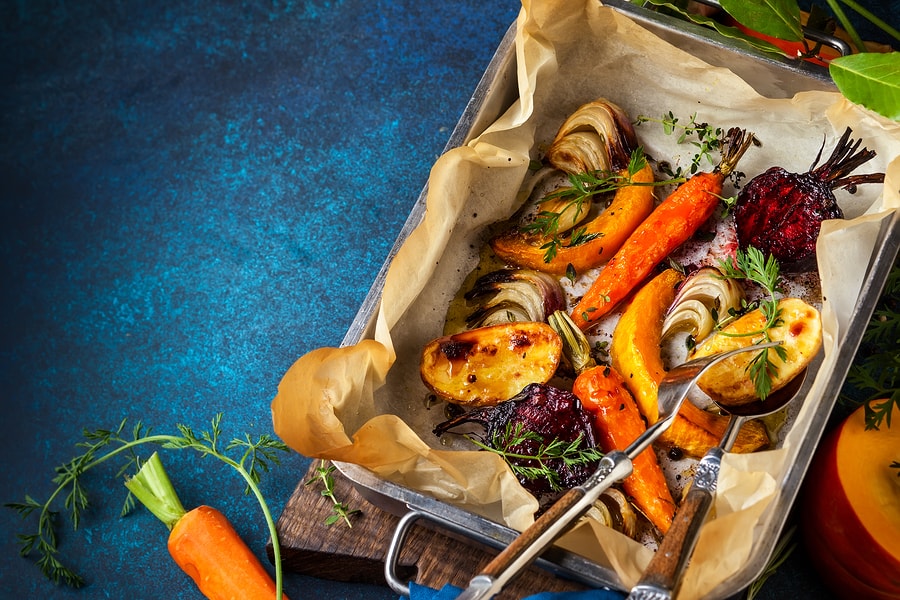
Plant-Based Diet Benefits:
Prevention of Chronic Diseases:
Eating mostly plants can lower high blood pressure, and lower your risk of illnesses like heart disease and diabetes. Fresh fruits, veggies, and grains are packed with nutrients that keep our bodies strong.
A research piece in the Journal of the American Heart Association revealed that individuals following a healthy diet abundant in plant foods experienced an 18 to 25-percent decreased likelihood of premature death from any cause.
Lowering Cancer Risk with a Plant-Based Diet
Consuming primarily plant-based foods while limiting animal products and high-fat items can reduce your risk of certain cancers, including breast, prostate, ovarian, and colorectal.
Weight Management and Digestion:
A plant-based diet often means more fiber, fewer calories, and a healthier weight. This can help with weight control and smoother digestion. You might lose weight and notice less bloating and more energy.
Mental Health and Mood:
Foods from plants can boost your mood. Nuts, seeds, and leafy greens contain elements that help brain function. Eating them can make you feel happier and more focused.
Environmental Impact and Health Concerns
Reduction in Carbon Footprint:
Eating more plants directly leads to environmental benefits. Livestock farming produces a lot of carbon. By choosing plants over meat, you're helping to reduce your carbon footprint.
Conservation of Water and Resources:
Livestock farming uses a lot of water—much more than growing plants. By going plant-based, you're using fewer resources and conserving water.
Concerns About mRNA Vaccines in Meats:
Recent discussions have brought up concerns about mRNA vaccines in meats and animal-based foods. Choosing a plant-based diet can help you avoid these potential uncertainties and ensure you're consuming foods you fully trust.
Ethical Reasons for a Plant-Based Diet
Animal Welfare and Industrial Farming Issues:
Factory farms often mistreat animals. They're kept in tight spaces and live in stress. Going plant-based means not supporting these practices.
Global Hunger and Food Distribution:
Producing meat takes a lot of food and water. This food could feed many humans. Eating a plant-based diet can help more people get food.
Debunking Myths About Plant-Based Diets
Myth 1: “You won't get enough protein”
Think plants can't pack a protein punch? Think again. Plant foods like lentils, beans, and tofu are all plant-based protein. You can get all the protein you need from plant-based diets as opposed to animal foods.
Myth 2: “Plant-based diets are deficient in essential vitamins and nutrients”
Fearful of missing out on nutrients? A balanced plant-based diet provides essential vitamins and crucial minerals like iron, calcium, and zinc.
Myth 3: “Eating plant-based is bland and lacks variety”
Bored of salads? There's so much more! From spicy curries to rich stews, plant-based food can be diverse and delicious. Your taste buds won't be disappointed.
Essentials of a Balanced Plant-Based Diet
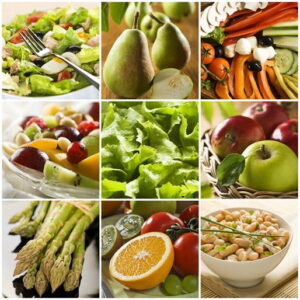
Macronutrients
Carbohydrates: For energy, whole grains and legumes are key. Think quinoa salads or chickpea stews.
Proteins: Build muscle without meat. Opt for bean burritos, lentil soups, tofu stir-fries, or tempeh sandwiches.
Fats: For good fats, go with avocado toast, nut butter spreads, seed-topped salads, or dishes cooked in olive oil.
Vitamins:
B12: Vegetarians can get B12 from dairy products like milk, cheese, and yogurt, as well as eggs. Also, certain superfoods, like spirulina are believed to contain B12. Supplements are another way to ensure you're getting enough. These are available in capsules, sublingual drops, or sprays.
Vitamin D: Enjoy sunlight daily, and consider vegan D3 supplements.
Calcium: Broccoli, collard greens, fortified plant milk, or chia seeds.
Minerals:
Iron: Spinach, quinoa, and pumpkin seeds. Pair with vitamin C-rich foods like oranges for better absorption. Here are more foods high in iron.
Zinc: Cashews, oatmeal, and chickpeas. Include these in snacks and meals.
Magnesium: Dark chocolate, bananas, and almonds. Perfect for treats and daily nibbles. More magnesium-rich foods here.
Transitioning to a Plant-Based Diet
Tips for Making a Gradual Transition
People who transition from a typical American diet to a plant-based one, often report weight loss, a noticeable boost in energy and well-being.
The reduced intake of processed foods and increased consumption of whole, nutrient-rich plant foods can lead to better digestion, clearer skin, and improved sleep.
Furthermore, the mental satisfaction of making mindful, sustainable choices adds to the overall sense of feeling better.
Over time, these positive changes will greatly influence your commitment to a plant-based lifestyle.
Start Slow:
Ayurveda, the ancient system of medicine that originated in India, emphasizes the importance of a gradual shift rather than an immediate overhaul.
One of the fundamental teachings of Ayurveda is that the human body thrives on stability and rhythm, and it resists sudden or drastic changes.
When it comes to transitions, such as adopting a new diet, Ayurveda suggests a step-by-step approach to acclimatize your body to new habits and routines.
For example, you might start with reducing meat intake gradually, incorporating more whole grains, vegetables, and legumes, and slowly adjusting your body to a new diet.
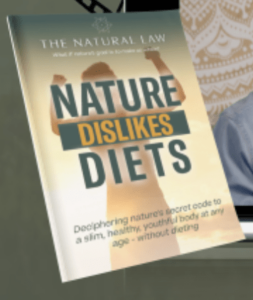
Meatless Mondays
Beginning with Meatless Mondays is a fantastic first step. Dedicate one day a week to entirely plant-based meals. Over time, this small change can make a significant impact on both your health and the environment.
Mix It Up:
Introduce plant-based meals alongside your usual dishes. By blending familiar favorites with new vegan or vegetarian recipes, you ensure variety and don't feel deprived. Gradually, you might find yourself craving plant-based options more often.
Avoid Over-reliance on Processed Foods:
While it's tempting to rely on processed vegetarian or vegan alternatives, it's crucial to remember that not all of them offer health benefits.
Consuming too many highly processed foods can compromise the nutritional quality of your diet. Healthy plant-based diets opt for whole foods and fresh ingredients whenever possible.
Get Clear on Your Motivation:
Invest time in understanding the reasons behind your choice to go plant-based. Whether it's health, environmental concerns, or ethical reasons, having a clear ‘why' will keep you motivated and committed.
Stocking Up for Success
Ensure your pantry and fridge are filled with these key items.
Stock up on beans (either dried or canned), grains like rice and quinoa, pasta, tofu, nuts, fresh produce, nutritional yeast, cooking oils, vegetable broth, oat or nut milk, agave, egg substitutes, and your favorite spices.
Having these essentials readily available facilitates diverse meal creation. Incorporate more fruits and vegetables into every meal; they're not just nutritious but also help keep you satiated.
Plan Your Plant-Based Lifestyle Ahead:
Preparation is key. Spend some time each week planning and prepping your meals. Batch-cooking vegan dishes and storing them ensures you always have a nutritious option on hand, reducing the temptation to revert to less healthy choices.
Importance of Listening to Your Body
Track Energy:
Your body often communicates its needs through energy levels. If you're feeling sluggish, you may need more iron-rich foods or complex carbs. Conversely, if you're bursting with energy after a particular meal, take note of what you consumed and include those foods more often.
Hunger & Fullness:
Understanding and respecting your body's hunger and satiety cues is essential. Learn to differentiate between physical hunger and emotional eating. Eat when your body signals it's hungry, and stop when you're comfortably full. Trust your body's innate wisdom; it often knows what it needs.
Check Nutrients:
While a plant-based diet can be rich in nutrients, it's wise to monitor your intake of specific vitamins and minerals, especially in the beginning. Use nutritional tracking apps or maintain a food journal to ensure you're getting a balanced diet. Regular checks can help you identify and fill any nutritional gaps.
Consult:
If you're unsure about your nutritional intake or have specific health concerns, consulting with a nutritionist or dietitian can be invaluable. They can provide tailored advice, suggest meal plans, and guide you through the nuances of a plant-based lifestyle. Remember, every individual's needs are different, so personalized guidance can be beneficial.
Suggestions for Plant-Based Alternatives to Popular Foods
Milk:
Swap cow's milk for plant-based kinds of milk.
Reduce Meat Intake:
General meat substitutes: Lentils, chickpeas, black beans, and seitan can mimic meaty textures in many dishes.
Chicken: Tofu, tempeh, jackfruit, or lion's mane mushrooms can be excellent replacements. Especially lion's mane, which has a texture remarkably similar to chicken.
Beef: Mushroom caps, or walnut and cauliflower mix can be used for burgers or mince.
Pork: Jackfruit can replicate pulled pork, while thinly sliced, marinated king oyster mushrooms mimic bacon.
Fish: Nori-wrapped tofu or banana blossoms can simulate a fish-like texture and flavor.
Cheese: Look for Cashew-based cheeses, almond cheeses, and nutritional yeast for a cheese flavor
Eggs: For baking, use flax or chia seeds. For scrambles or omelets, silken tofu is perfect.
Sample Plant-Based Meal Plans
Breakfast, Lunch, Dinner, and Snack Ideas
Breakfast:
- Smoothie Bowl: Blend frozen berries, spinach, almond milk, and a banana. Top with granola and chia seeds.
- Tofu Scramble: Sauté tofu with turmeric, black salt, peppers, and onions. Serve with avocado toast.
Lunch:
- Chickpea Salad: Mix chickpeas, cucumbers, tomatoes, red onions, lemon juice, and herbs.
- Lentil Soup: Cook lentils with vegetable broth, carrots, celery, and seasonings.
Dinner:
- Stuffed Bell Peppers: Fill peppers with a quinoa, black bean, and corn mixture. Bake until tender.
- Mushroom “Chicken” Stir Fry: Use lion's mane mushrooms with veggies and a soy-ginger sauce. Serve over brown rice.
Snacks:
- Hummus & Veggies: Dip carrot sticks, cucumber slices, and bell peppers into creamy hummus.
- Nut & Seed Mix: Nuts and seeds provide healthy fats. Combine almonds, pumpkin seeds, sunflower seeds, and dried cranberries for a quick bite.
Embracing Natural Cues Over Calorie Counting
Tips for Dining Out and Traveling on a Plant-Based Diet
Research Ahead: Use apps or websites to find vegan or vegetarian-friendly restaurants.
Customize: Don't hesitate to ask for modifications to dishes. Most restaurants are happy to substitute plant-based foods.
International Cuisine: Opt for cultures known for plant-based diets, like Indian, Thai, or Mediterranean.
Pack Snacks: Always carry vegan bars, nuts, or seeds when traveling. Handy for unexpected hunger.
Stay Hydrated: Drink plenty of water. It helps with digestion and keeps you feeling full.
Learn Local Terms: If traveling abroad, know how to say “vegan” or “no dairy/meat” in the local language.
Recommended Books and Documentaries on Plant-Based Living
Plant-Based Diet and Plant-Based Eating Books:
“How Not to Die” by Dr. Michael Greger: Explores how plant foods can prevent and reverse the causes of premature death.
“The China Study” by T. Colin Campbell & Thomas M. Campbell II: Highlights the connection between nutrition and chronic diseases.
“Eat and Run” by Scott Jurek: Chronicles the journey of an ultramarathon runner thriving on a plant-based diet.
Documentaries:
“Forks Over Knives”: Examines the claim that most chronic diseases can be controlled or reversed by rejecting animal-based and processed foods.
“The Game Changers”: Debunks the myth that meat is necessary for protein, strength, and optimal health.
“Cowspiracy”: Investigates the environmental impact of animal agriculture.
Useful Apps and Websites for Plant-Based Living
Apps:
HappyCow: Find vegan and vegetarian restaurants near you.
Cronometer: Tracks nutrients to ensure you're meeting all your dietary needs.
Yummly: Offers a vast collection of plant-based recipes tailored to individual preferences.
Websites:
Veganuary: Provides a starter kit and resources for those trying veganism for a month (or longer).
NutritionFacts.org: Offers the latest in nutrition-related research in easy-to-understand videos and articles.
Minimalist Baker: Features simple and delicious vegan recipes that require 10 ingredients or less.
Local Plant-Based Groups and Communities
Meetup: Search for local vegan or vegetarian groups where members share recipes, dining experiences, and more.
Facebook: Many cities have local vegan or plant-based groups that share events, restaurant recommendations, and support.
VegFests: Attend local vegan festivals for food, speakers, and community connection.
Community Centers: Many community centers or wellness hubs offer plant-based cooking classes or workshops.
FAQ (Frequently Asked Questions on Starting a Plant-Based Diet)
Q1: How do I ensure I get all essential nutrients on a plant-based diet?
A1: Ensuring you get all essential nutrients involves a varied diet. Consume a range of vegetables, fruits, legumes, whole grains, nuts, and seeds. Monitor vitamins like B12, D, and calcium, which are less prevalent in plant-based foods. Consider fortified foods or supplements if needed. Regularly consulting a nutritionist can also provide guidance tailored to individual needs.
Q2: Can athletes and bodybuilders thrive on a plant-based diet?
A2: Absolutely! Many athletes and bodybuilders thrive on plant-based diets. Beans, lentils, tofu, tempeh, and quinoa are excellent plant-based proteins. Pairing foods (like beans and rice) can also provide complete protein profiles. Proper planning ensures adequate calorie and nutrient intake to support rigorous training and muscle building.
Q3: Is a plant-based diet expensive?
A3: A plant-based diet can be as budget-friendly or as expensive as you make it. Plant-based foods like grains, beans, and seasonal vegetables are often more affordable than processed foods or meat. Buying in bulk, opting for generic brands, and focusing on local and seasonal produce can further reduce costs.
Q4: How do I handle social situations and peer pressure when eating plant-based foods?
A4: Communication is key. Politely express your dietary choices and reasons without being confrontational. Bringing a plant-based dish to share at gatherings can be a great way to introduce others to the cuisine. Over time, most peers and family respect personal choices, especially when they see the positive benefits.
Q5: Are there any risks associated with plant-based diets?
A5: Like any diet, potential risks arise when it's not well-balanced. Some individuals might lack certain nutrients, such as B12, iron, or omega-3 fatty acids. However, with proper planning and education, these risks can be mitigated. It's always beneficial to consult with a nutritionist to ensure a well-rounded and nutritious plant-based diet.
Before you Go:
Whole food plant-based living can be transformative. Throughout this guide, we've delved into the foundations of a plant-based diet, debunked myths, shared resources, and offered insights to help you make a confident transition to eating more plant-based foods.
Remember, every person's journey is unique. It's essential to listen to your body, adjust based on your needs, and always continue to educate yourself.
As you explore plant-based living, remember to take things at your own pace. Each step, big or small, contributes to a healthier, more sustainable lifestyle for you and our planet. Embrace the plant-based journey and the countless opportunities to learn, grow, and thrive on a plant-based diet.
